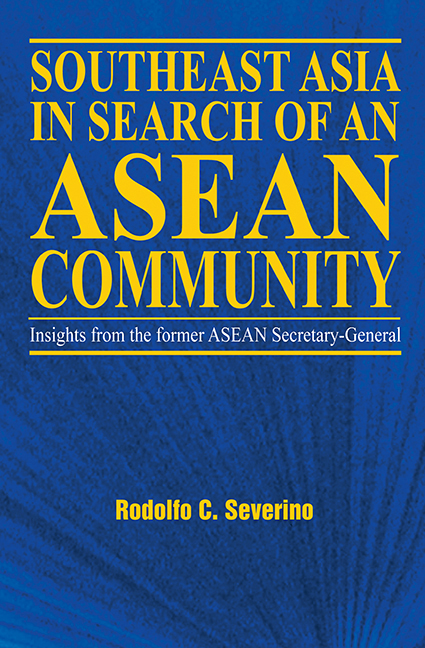Book contents
- Frontmatter
- Contents
- Foreword
- Introduction
- About the Author
- Acknowledgements
- Glossary
- 1 The “ASEAN Way”: Its Nature and Origins
- 2 Who Belongs in ASEAN? The Question of Membership
- 3 The Issue of Non-Interference
- 4 Regional Security: The ASEAN Role
- 5 Integrating the Regional Economy
- 6 ASEAN and the World
- 7 The ASEAN Community: Is It for Real?
- 8 What Kind of Future for ASEAN?
- Appendices
- Interviews
- Index
6 - ASEAN and the World
Published online by Cambridge University Press: 21 October 2015
- Frontmatter
- Contents
- Foreword
- Introduction
- About the Author
- Acknowledgements
- Glossary
- 1 The “ASEAN Way”: Its Nature and Origins
- 2 Who Belongs in ASEAN? The Question of Membership
- 3 The Issue of Non-Interference
- 4 Regional Security: The ASEAN Role
- 5 Integrating the Regional Economy
- 6 ASEAN and the World
- 7 The ASEAN Community: Is It for Real?
- 8 What Kind of Future for ASEAN?
- Appendices
- Interviews
- Index
Summary
It is one of ASEAN's strengths that it has kept itself politically and economically open to the rest of the world, even as it promotes Southeast Asian solidarity, seeks to keep itself from being entangled in the quarrels of the strong, and professes to strive for the integration of the regional economy. One estimate has it that, in the 1996–2000 period, foreign trade as a percentage of the gross domestic products of Indonesia, Malaysia, the Philippines, Singapore, Thailand and Vietnam — the region's leading trading nations — averaged 149, ranging from Indonesia's 67 per cent to Singapore's almost 320 per cent. The comparable figure for India was less than 27 per cent. Until today, ASEAN member-countries’ trade, investment and other economic relationships have been largely with developed economies. They have substantial economic and financial agreements and arrangements with many countries around the world. They take full part in multilateral trade negotiations and other international economic forums. Eight are members of the World Trade Organization; Laos and Vietnam are trying to get in.
ASEAN members have strong political relations with states outside the region, and some have defence arrangements with external powers. ASEAN as a group has embarked on initiatives like free trade agreements and economic partnerships, as well as development cooperation, with several countries and groups of countries — initiatives with high political significance. ASEAN has involved other powers in taking common action on regional problems. A variety of examples abound — the Vietnam-Cambodia issue of the 1970s and 1980s, the Indochinese asylum-seekers, the Treaty of Amity and Cooperation in Southeast Asia, the Southeast Asia Nuclear Weapons-Free Zone, the Chiangmai Initiative on finance cooperation, the South China Sea issue, the SARS crisis, the response to the aftermath of the 2004 tsunamis. These economic and political linkages find their most visible expressions in the ASEAN dialogue system, the ASEAN Regional Forum, the ASEAN+3 process, the summit meetings that ASEAN convenes annually with the Northeast Asian countries and India and, from time to time, with other neighbouring states, and now the East Asia Summit.
- Type
- Chapter
- Information
- Southeast Asia in Search of an ASEAN Community , pp. 256 - 341Publisher: ISEAS–Yusof Ishak InstitutePrint publication year: 2006

